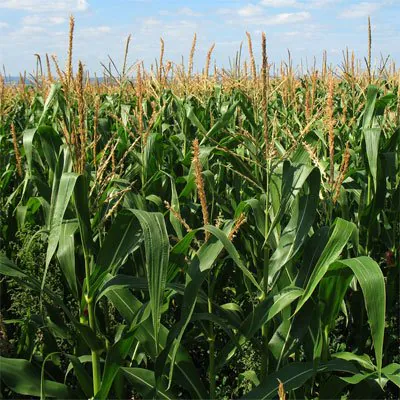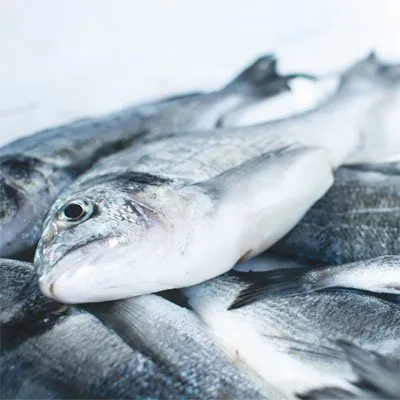The cultivation of genetically modified organisms (GMO) is still prohibited in Switzerland. However, imports, tolerance limits and new plant breeding techniques make GMO analysis more important than ever.
Genetically modified organisms (GMOs) have long been a controversial topic in the food industry and in agriculture. Their use is heavily regulated in Switzerland. While the ban on growing GMOs in Switzerland has been extended until 2025, they can still be spread in animal feed and seeds and their imported grains – with correspondingly strict approval processes.
The problem: With an ever-increasing share of GMOs in agriculture – genetically modified plants are cultivated on around 190 million hectares worldwide – and ever longer transport routes, contamination or inadequate labeling can occur. In addition, new breeding methods are increasingly being used, which make it difficult to trace gene manipulations – challenging both for (agricultural) production companies and for analytics.
What does GMO mean?
GMOs are organisms in which the genetic material has been artificially modified. The aim of such a change is to add new properties to the genetic material. In a plant, for example, this can be a higher resistance to diseases. Pioneers among the cultivated GMOs are soya, corn and rapeseed. The change can take place using various technologies, for example the transfer of genetic material from one plant species to another. In recent years, however, genome editing has developed, which changes the genetic material without a trace using an enzyme system and thus poses new questions for risk assessment. The best-known new method is CRISPR/Cas9. This is a molecular-biological method to cut and modify DNA in a targeted manner. The purpose: to edit individual genes and make the breeding of useful plants more precise, faster and cheaper.
Which GMO guidelines apply in the EU?
In principle, GMOs may be cultivated and circulated in the EU. However, their authorization is subject to a strict and thorough risk assessment. For example, only one type of corn was approved as a GMO within the EU at the end of the 1990s – this approval has now expired. The other 58 approved organisms are imports – above all soybeans for use as animal feed.
All genetically modified organisms such as agricultural and horticultural crops must be labeled in the EU. This obligation also applies to products that contain genetically modified organisms or are manufactured from genetically modified organisms. Food, ingredients and additives that were produced with the help of genetically modified micro-organisms do not have to be labelled. Examples of this are carriers such as flavors or vitamins and technical auxiliaries. Foodstuffs contaminated with the smallest amounts of GMOs also do not have to be declared. The EU upper limit of 0.9% applies here.
Which GMO regulations apply in Switzerland?
In Switzerland, the cultivation of genetically modified organisms is only permitted for research purposes, with a few exceptions that require a permit. A moratorium on the cultivation of genetically modified organisms has been in force in Switzerland since the end of 2005 as a result of a referendum. So far, this has been extended four times – most recently until the end of 2025. At the same time, it is being intensively examined what future risk-based regulations for the new breeding methods could look like. By mid-2024, a decision should be made on how to deal with GMOs from new methods such as genome editing.
GMO products are not completely banned in Switzerland – four corn varieties and one soybean variety are approved as imported GMO products that must be declared for use in food. Genetically modified feed ingredients may also be imported after BLV approval. Basically, all GMO food and feed must be labelled. Regular and comprehensive monitoring of imported seed and plant material capable of reproduction is intended to ensure that the sectors comply with the law. Traces of approved GMOs of up to 0.5% in food and 0.9% in animal feed are tolerated. If the value is higher, food and animal feed must be labeled as genetically modified. Unintentional traces of previously unapproved genetically modified organisms can also be tolerated under certain circumstances. The condition: It is a plant approved by the FSVO, the proportion does not exceed the 0.5% limit and the producer or dealer can prove that all preventive measures have been taken. – Only then the product can be put into circulation.
Why is GMO analysis so important?
In particular, heavily processed products and new breeding methods challenge analytics. In addition, the increasing number of GMO cultivation areas worldwide increases the probability of the unintentional spread of genetically modified organisms. – It is becoming increasingly difficult to distinguish GMOs from conventional crops. These factors, in combination with the different GMO laws and regulations of the numerous importing countries, make comprehensive analysis unavoidable.
Specialized laboratories and highly professional analytical methods identify GMOs quickly and reliably and ensure that labeling requirements are met. Due to the current tolerance regulations, the quantification of the GMO components is essential for manufacturers or retailers in order to meet the declaration obligation. For agriculture, on the other hand, the GMO analysis enables this obligation to be checked and thus ensures the quality of its own production.
Experienced analysis laboratories such as Biolytix work with accredited methods to quantitatively and qualitatively identify even the smallest traces of GMOs. Various real-time PCR methods are used for screening. These detect individual GMO components even in complex and highly processed food and feed as well as in seed samples, tobacco or cut flowers and provide information on how high the GMO content is in the corresponding product.
What is the NON-GMO label?
Outside of Europe, for example in the USA, genetically modified foods are also the subject of much discussion. Manufacturers and processors who want to export their products to the United States and want to specifically label them as NON-GMO can be certified for the NON-GMO label. Biolytix, for example, works together with Bioaudix. The NON-GMO label was developed together. Bioaudix is part of the US Department of Agriculture (USDA) Process Verified Programs (PVP) and is regularly audited by the American authorities to ensure that the certification processes meet the standards. The program is intended to support companies and manufacturers in verifying certain production processes and in informing consumers transparently and reliably about the origin and quality of food. – The high European standard is particularly appreciated by consumers in the USA.
In addition to observing the legal regulations and the obligation to declare or NON-GMO labelling, GMO analysis of feed and food is primarily about one thing: risk minimization. Finally, the effects of GMOs on humans, animals and the environment are difficult to assess because there is a lack of corresponding long-term experience and research bases. The unauthorized release of GMOs can endanger both health and biodiversity. At the same time, a risk-based solution must be found with regard to the new breeding methods. Whatever this may look like: Well-founded GMO analysis will continue to be decisive for compliance with the regulations that have been passed and for the safety of consumers and nature.




